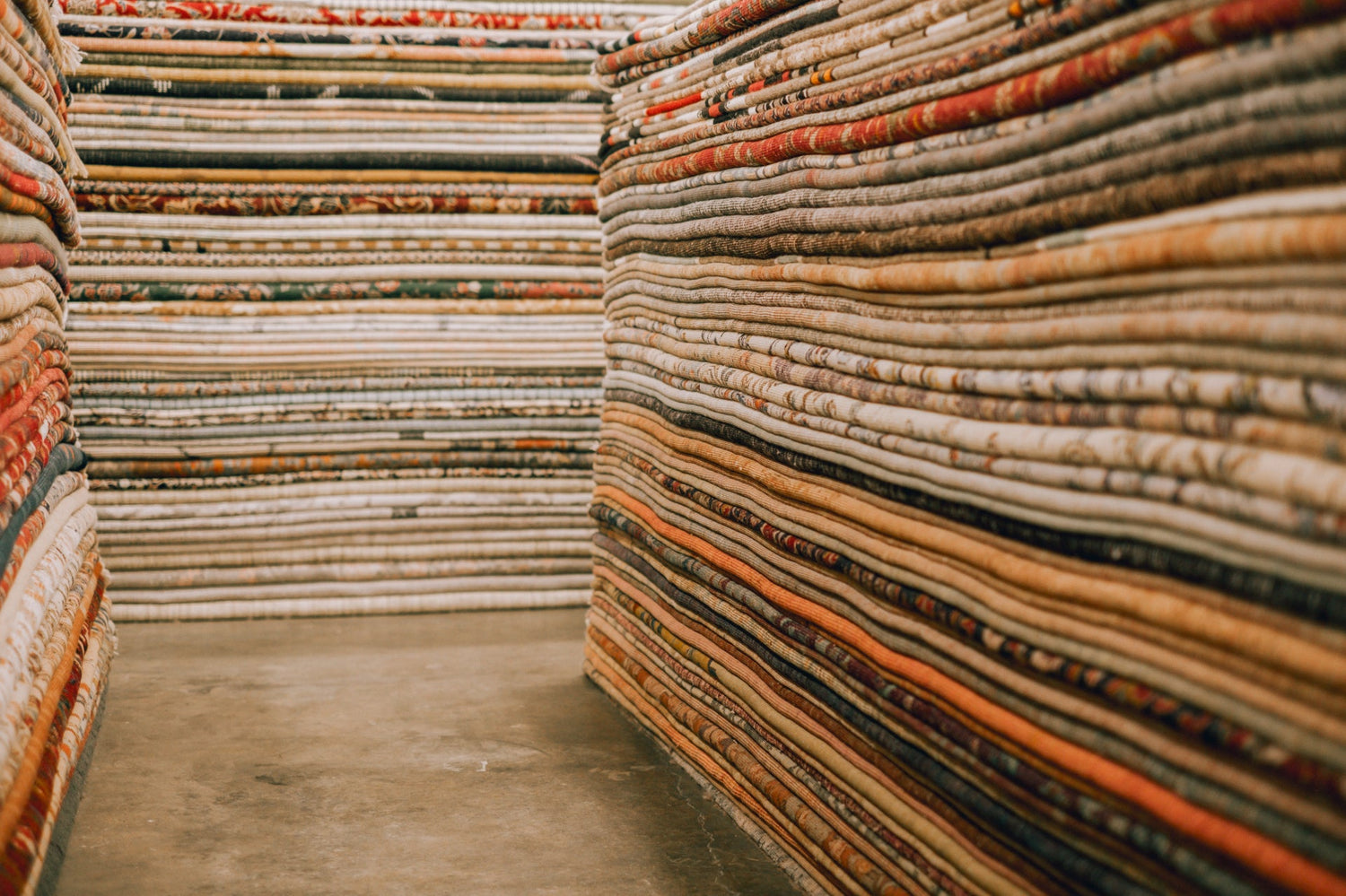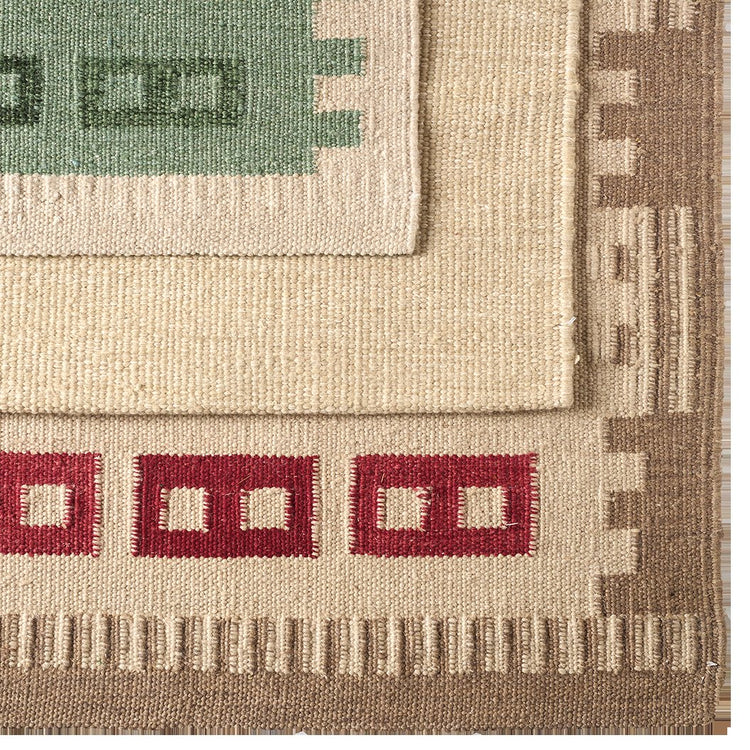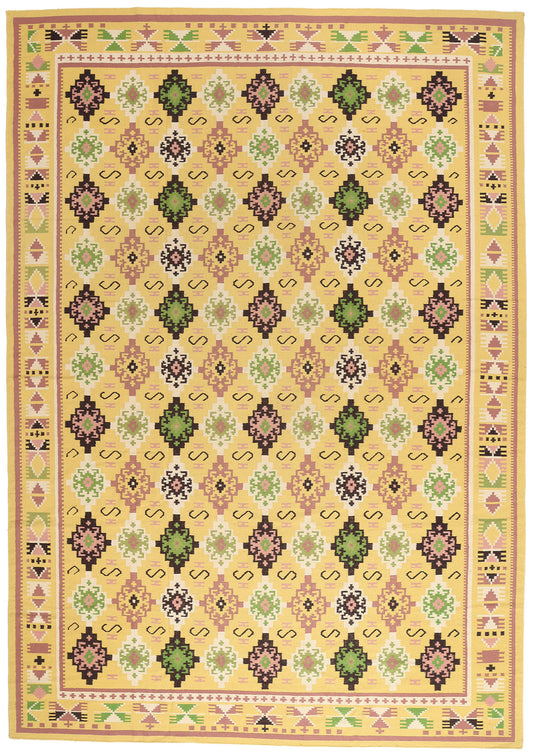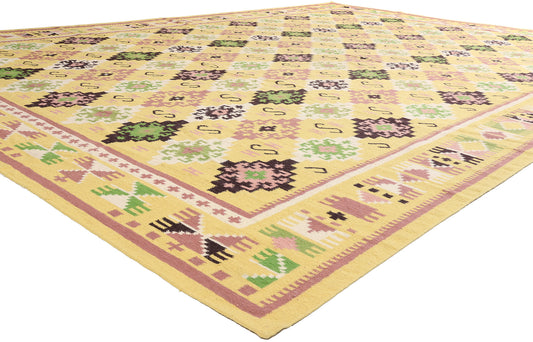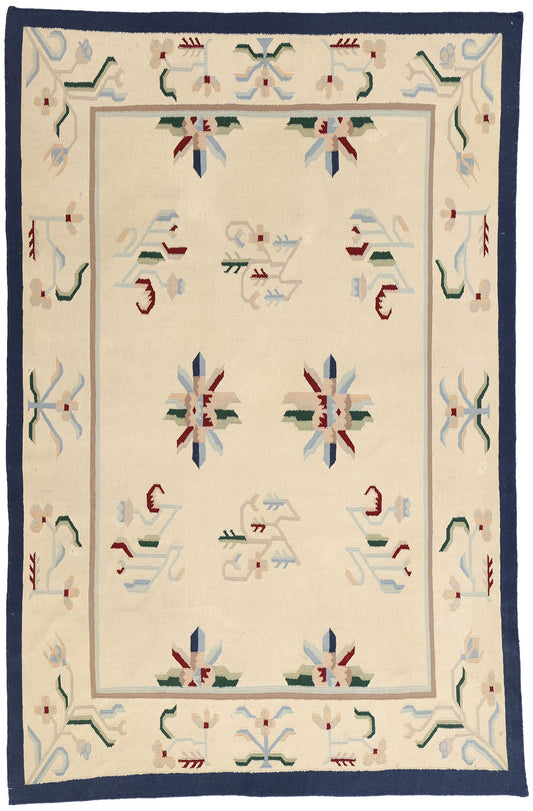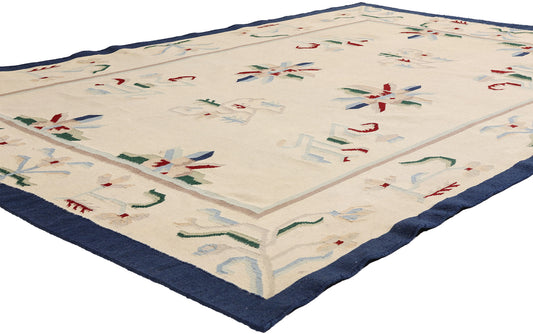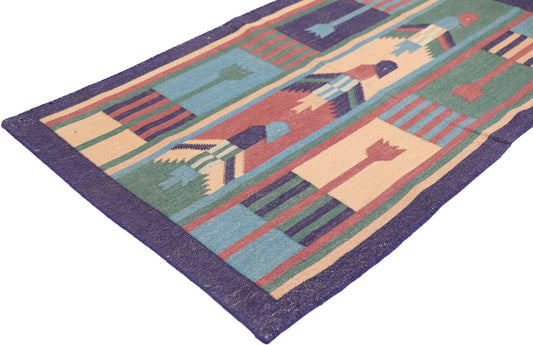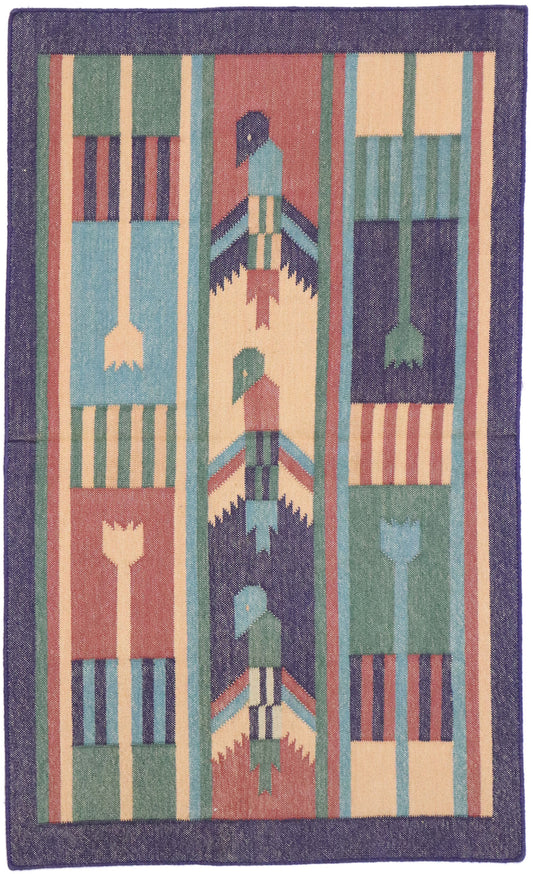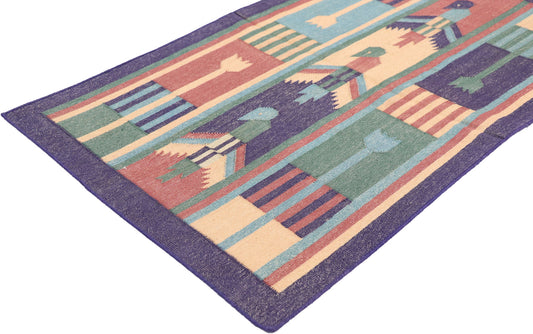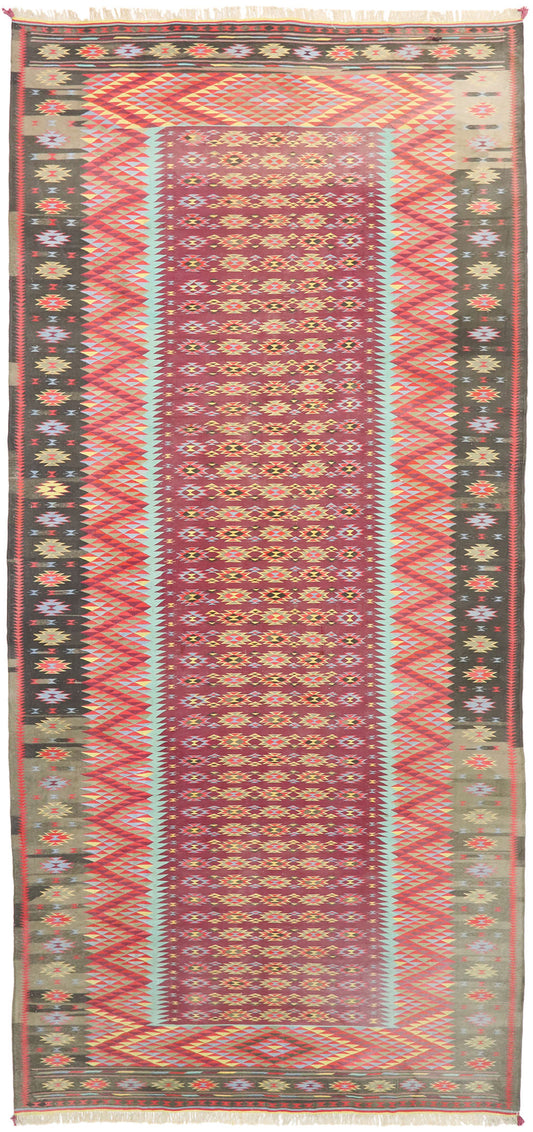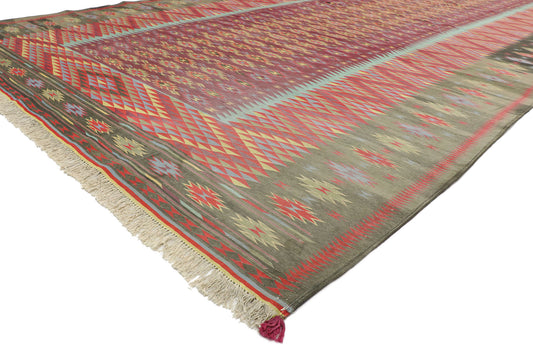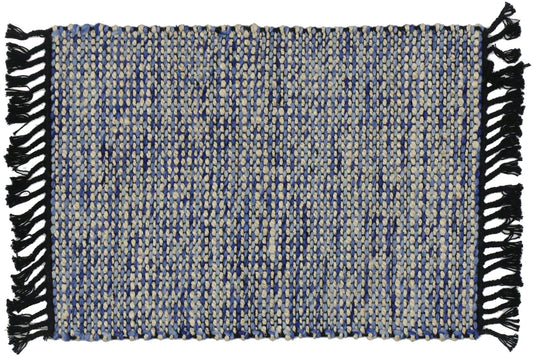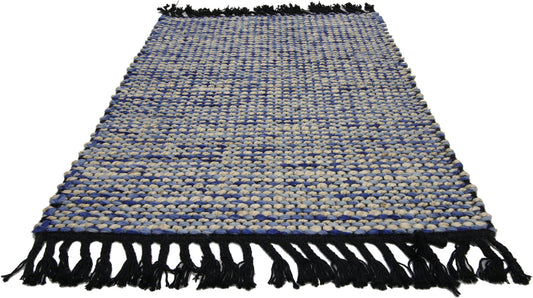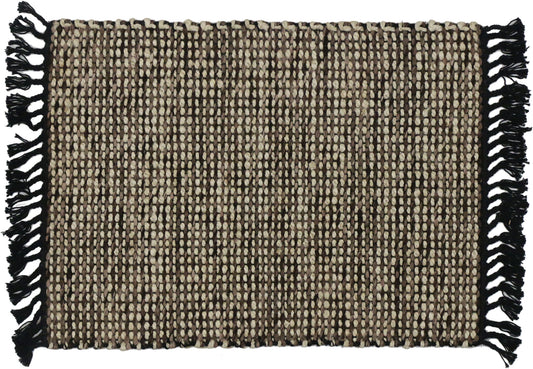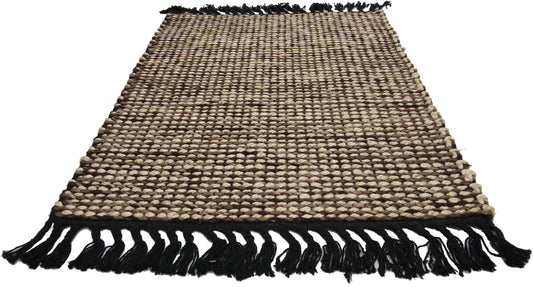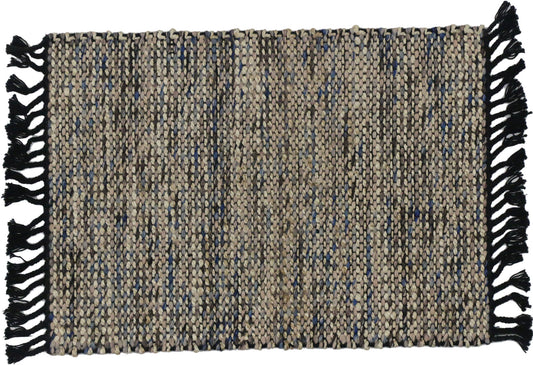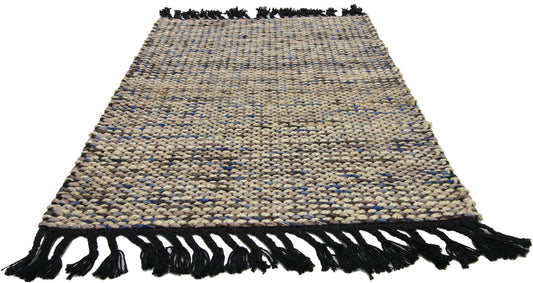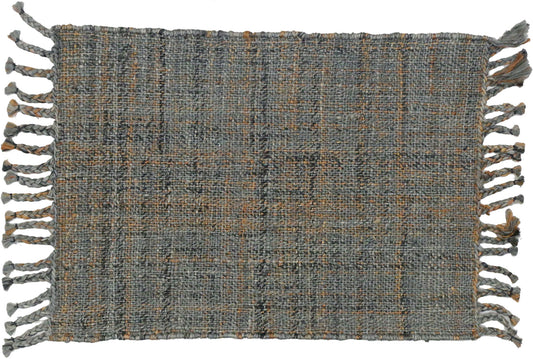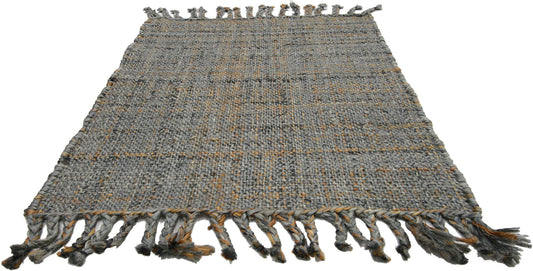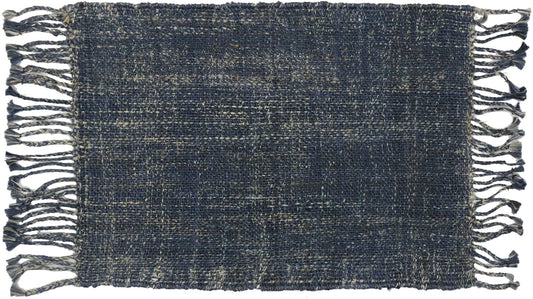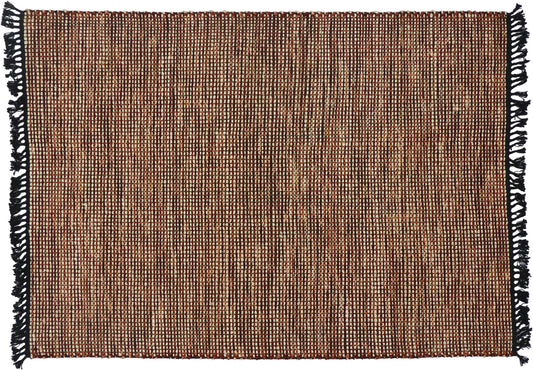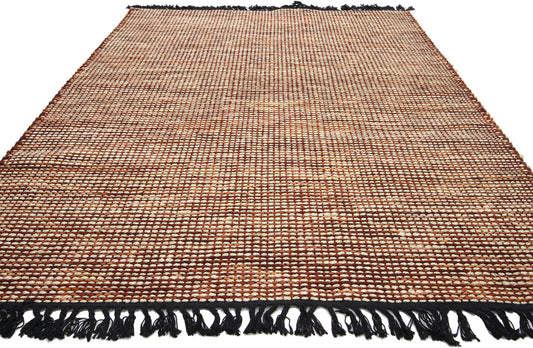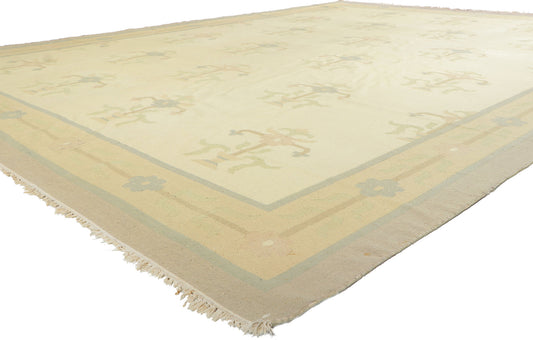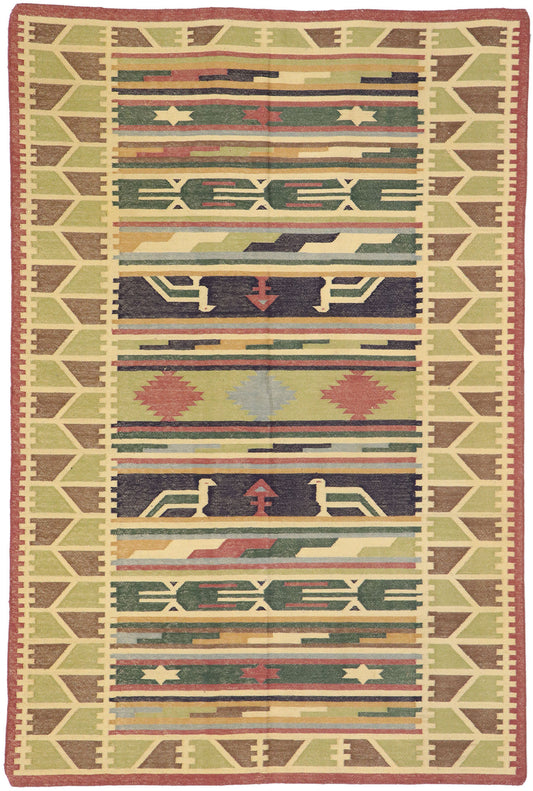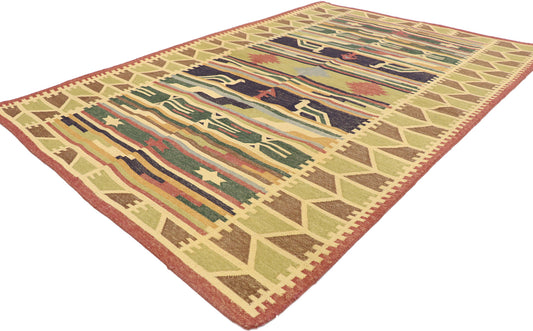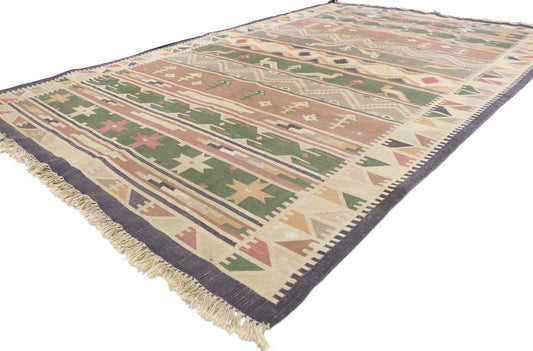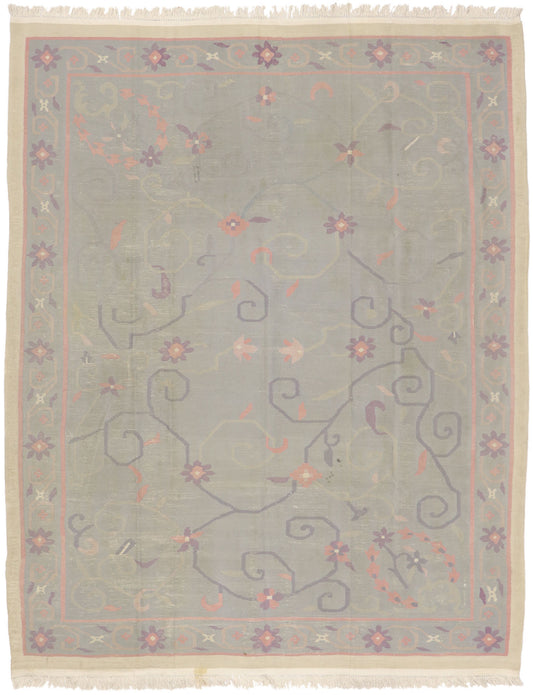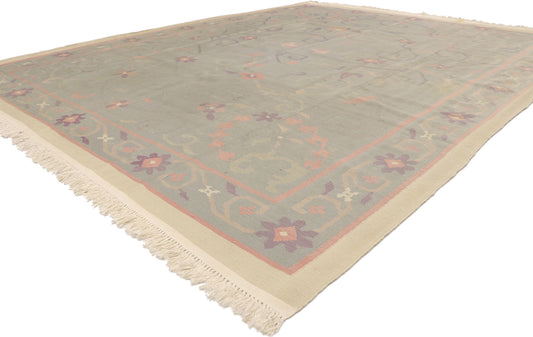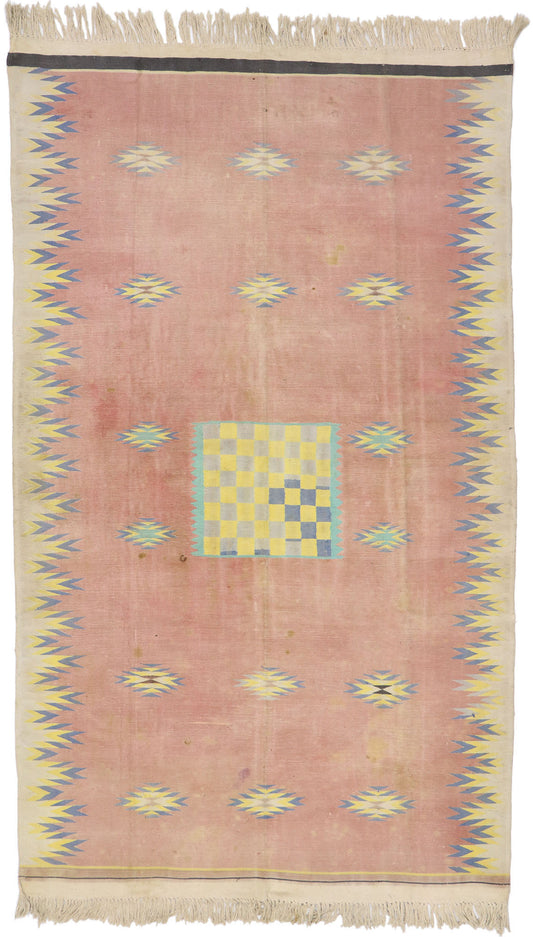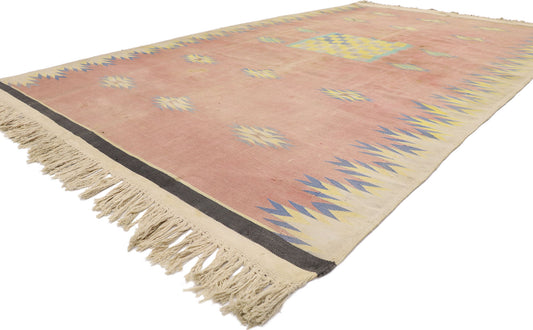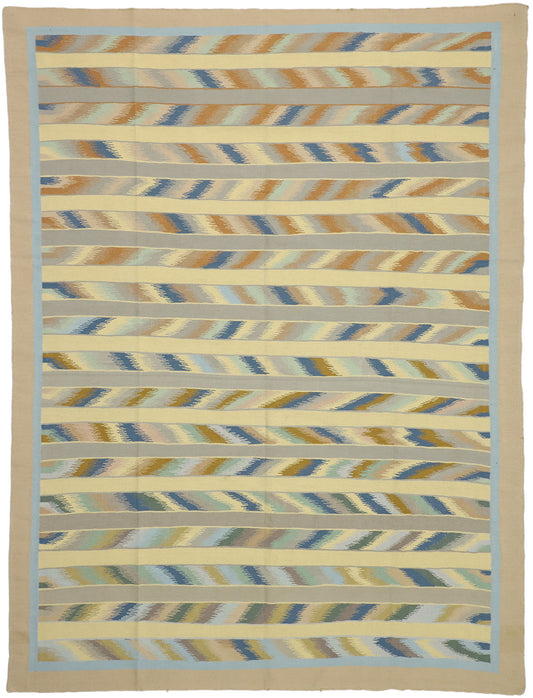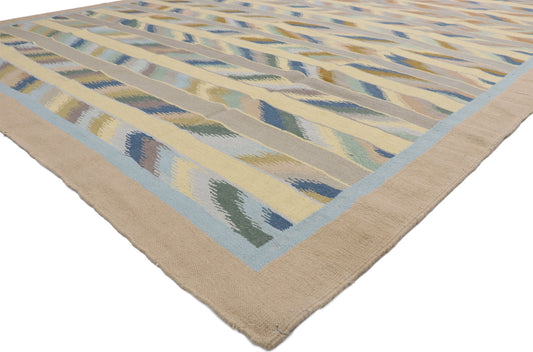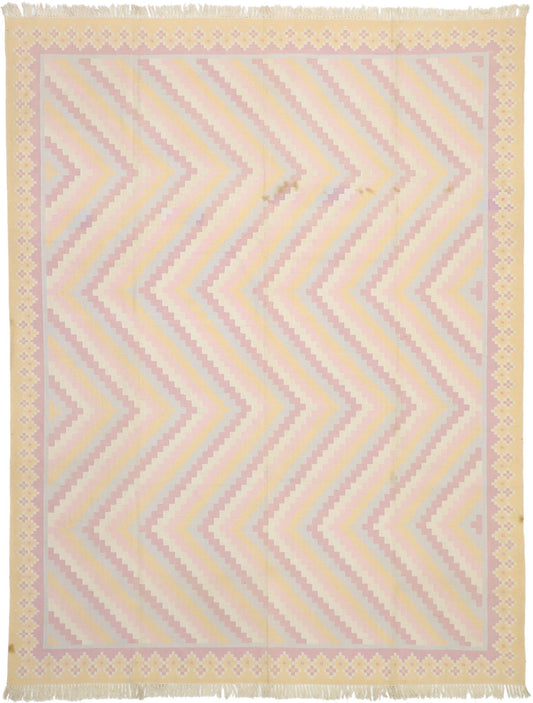Handwoven Dhurrie Rugs: Durable, Lightweight, and Timeless
The first thing that strikes you when you encounter Pakistani or IndianDhurrie rugs for sale is their unique appearance. Unlike traditional Oriental rugs that feature a knotted pile tied around the warp, Dhurries are weft-faced flatweaves where the dense weft yarns conceal the warp. This technique results in a thinner and more compact structure that’s remarkably light and durable. Place one in your living room or dining area to create a more inviting space. You could also use it as a wall covering!
The Colorful Evolution of Dhurrie Weaving
Older Dhurrie carpets tend to showcase simpler patterns with fewer colors. Among the colors featured were reds, blacks, whites, blues, and natural cotton hues. The 19th century ushered in a transformation in Dhurrie designs as synthetic aniline dyes opened the door to brighter palettes and more intricate patterns. This shift reflected changing tastes and broader markets while keeping the handwoven tradition intact. To distinguish their creations, craftsmen used vibrant colors and intricate patterns, resulting in unique and stunning pieces that grace modern homes today.
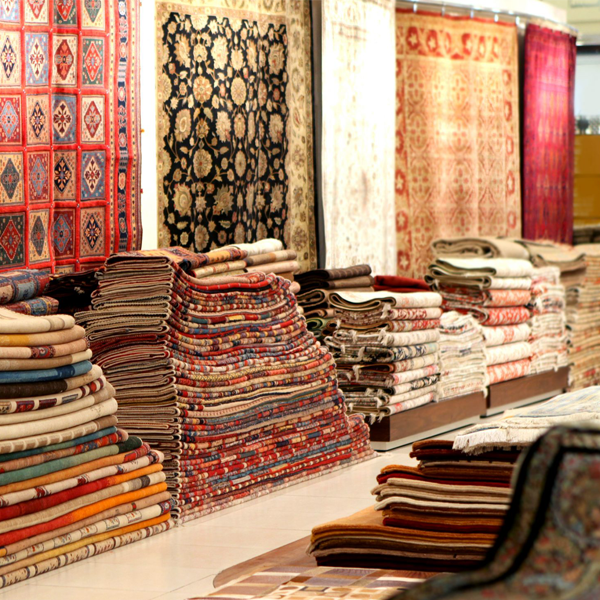
How Can You Tell If a Dhurrie Rug Is High Quality?
Determining the quality of a Dhurrie rug requires attention to several factors:
- Material: High-quality Dhurrie rugs are typically made
from natural materials like cotton, wool, silk, or jute. The choice of
material affects the rug's durability and feel. - Weave: A
tightly woven Dhurrie rug is a sign of good craftsmanship. Check for
uniformity in the weave pattern, as irregularities may indicate lower
quality. - Colorfastness: Authentic Dhurrie rugs should not
fade easily. To test this, dampen a cotton ball and gently rub it on
the rug's fibers to see if any color transfers. - Design Complexity:
While simpler designs are characteristic of traditional Dhurries,
high-quality modern Dhurrie rugs may feature intricate patterns and
vibrant colors. The design's complexity should be consistent and
well-executed. - Reversibility: Dhurrie rugs are often
reversible, meaning you can use both sides. This feature indicates the
rug's durability and craftsmanship. - Origin: Consider the
rug's place of origin. Dhurries from renowned production regions like
Panipat in India often come with a reputation for quality.
By paying attention to these factors, you can make an informed
decision and select a high-quality Dhurrie rug that suits your
preferences and needs.
Handwoven Dhurries for Discerning Interiors
The variety of these rugs ensures that you’ll always find a piece that integrates into your environment. Whether your décor leans towards Indian, bohemian, or eclectic styles, there’s a piece at Esmaili Rugs waiting to enhance your space.
A Woven Legacy: The History of Indian Dhurrie Rugs
Dhurrie rugs originated centuries ago in India. Proudly displayed in royal palaces and village homes alike, they were also featured in religious and wedding ceremonies as floor coverings laid out for guests. With the lightweight and durable nature of the flatweave construction, Dhurrie rugs suited India’s warm climate perfectly.
Early designs began with simple features like indigo stripes, but over time, they evolved into the vibrant, intricate patterns we see today. The choice of a Dhurrie isn’t merely about adding decor. It’s about bringing a piece of artistry and culture into your daily life.

